1. Statement Trees with Defined Beds
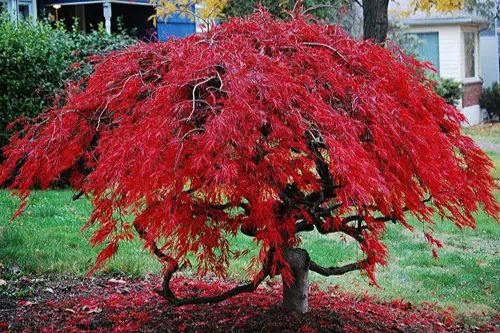
One or two standout trees—especially with their own mulched or edged bed—can anchor an entire yard. Think Japanese maple, dogwood, or crape myrtle, depending on your region. These trees often have dramatic shapes, foliage, or blooms that make them look more valuable than they are. When placed well, they instantly elevate a front or back lawn.
Surrounding them with a clean, circular or square bed (no grass creeping in) makes the tree feel like a featured element. It’s the landscape version of putting a sculpture on a pedestal. Even a small yard can feel fancy if the focal point is elegant. And once established, trees like these are relatively low maintenance.
2. Gravel Pathways with Defined Borders
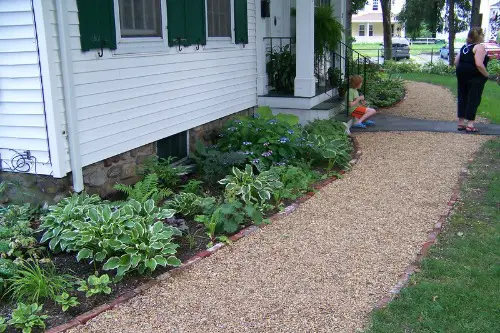
Crushed gravel walkways bordered with stone, wood, or metal edging feel like something out of a country estate. They create a clear path, suggest purpose, and instantly organize an outdoor space. While gravel itself is relatively inexpensive, when it’s neatly contained and weed-free, it sends upscale vibes. Think of it as the landscaping equivalent of putting your outfit together with accessories.
The borders are what sell the whole look. They keep the gravel in place and elevate the finish, especially when paired with symmetrical plantings or lighting. Homeowners often overlook paths, but those with structure make everything feel intentional. And anything intentional tends to feel more expensive than it is.
3. Symmetrical Planting Around Entryways
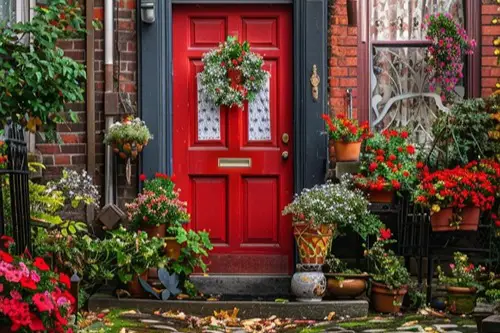
When plants flank a doorway or line up evenly along a path, it creates visual harmony that reads as formal and expensive. This kind of symmetry is common in estate gardens and historic homes. Even just two matching pots on either side of a front door can mimic the look. It’s a trick straight out of the luxury hotel playbook.
Symmetry is psychologically pleasing—it makes the space feel balanced and serene. And while the plants themselves can be simple, the arrangement elevates the impression. You don’t need boxwoods or rare topiaries; even seasonal flowers work if they’re mirrored properly. This move is all about placement over price.
4. Uplighting Trees or Architectural Features
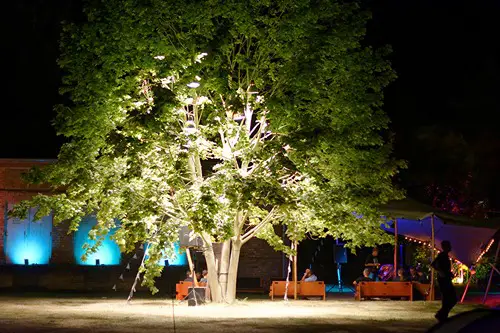
Lighting makes a huge difference in how a home looks after dark, and uplighting is especially dramatic. When used to highlight trees, columns, or a textured wall, it brings a bit of theatrical flair to the yard. The soft glow mimics what you’d see at boutique hotels or event venues. It gives the illusion that someone hired a lighting designer.
Low-voltage landscape lighting kits are widely available and fairly easy to install. The trick is placing the light at the base and angling it up for shadow and contrast. Trees with interesting bark or shape are perfect candidates. This trick works even better when combined with a well-maintained lawn or path.
5. Manicured Hedges (Even Small Ones)
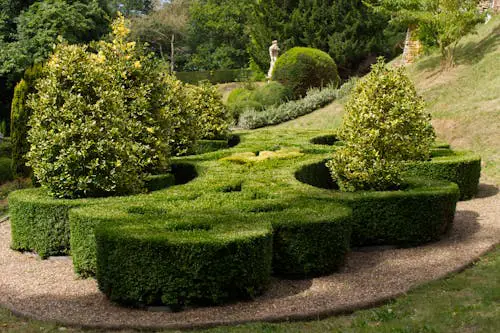
Even if you don’t have a full garden hedge, a row of neatly clipped shrubs sends a strong signal. The effort it takes to keep hedges trimmed regularly is what gives them a high-end feel. The clean lines and sculpted appearance suggest constant care and attention. Think of it as the equivalent of having tailored clothes—simple, but polished.
Boxwoods are a classic choice, but even basic evergreens can be shaped to give the look. Keeping the tops flat and the sides straight creates that formal English garden vibe. It doesn’t cost much, but it takes consistency. And that consistency tricks the eye into reading “wealth.”
6. A Single Oversized Planter as a Focal Point
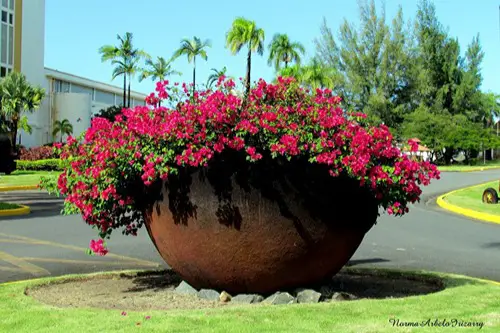
Rather than lots of small planters scattered around, one big, bold planter draws the eye and looks intentional. Oversized pots in stone, concrete, or ceramic make a big impact, especially when filled with lush greenery. This kind of focal point mimics what you’d find at upscale lobbies or high-end homes. It says, “Someone planned this.”
Even if the plant itself is simple—like a fern or peace lily—the scale of the container elevates everything around it. The secret here is contrast: big planter, clean space. It shows restraint, which often signals sophistication. Plus, one planter is easier to maintain than ten.
7. Uniform Mulch in Garden Beds
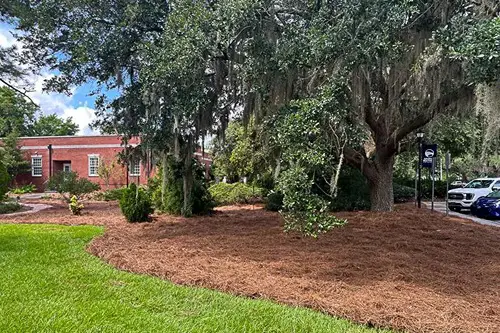
Fresh, evenly spread mulch ties everything together and immediately improves curb appeal. It creates a clean canvas that makes flowers and shrubs stand out, like a freshly vacuumed carpet for your garden. The uniform color and texture of mulch give the impression of professional landscaping. And yes, even mulch has a psychological effect.
It also suppresses weeds, which helps everything stay neat longer. Dark brown or black mulch tends to look richest, as it mimics the soil in luxury botanical gardens. A common mistake is using different types of mulch in one yard, which looks chaotic and cheapens the vibe. When it’s uniform and tidy, the whole yard feels more expensive.
8. Perfectly Edged Lawns
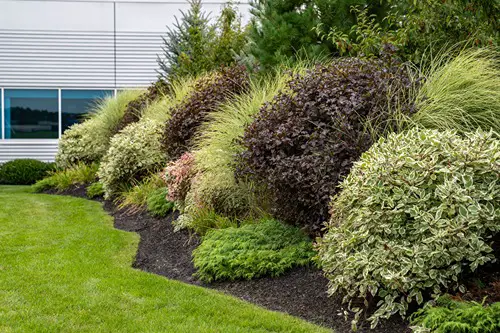
There’s something almost hypnotic about a lawn with razor-straight edges along the driveway and walkways. It gives the impression that someone hired a professional landscaper, even if all it took was a little extra time and a good edging tool. Neat boundaries make a yard look cared for, precise, and clean—qualities we subconsciously associate with luxury. This is a simple DIY move that reads like a regular visit from a groundskeeping crew.
A well-edged lawn contrasts sharply with surrounding surfaces, drawing attention to the shape and symmetry of the whole yard. That visual crispness mirrors what you’d see at resorts or high-end golf courses. Plus, the process doesn’t require fancy equipment—just consistency and patience. It’s one of those little details that says, “I have the time and money to keep things in check.”
9. Strategic Use of Evergreen Plants
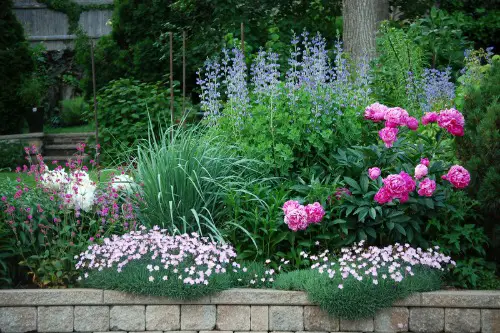
Evergreens stay green all year, so they provide structure and color even in winter or off-seasons. Planting them in key locations—like corners of the house or property lines—creates a sense of permanence. That’s a trait often seen in older, established homes and high-end neighborhoods. They quietly tell you the landscape looks good all the time, not just in spring.
Evergreens come in many forms, from low groundcovers to tall, columnar trees. The key is using them to anchor the landscape and complement seasonal plants. When the rest of the yard goes dormant, evergreens keep it looking alive and curated. It’s a four-season trick that doesn’t get enough credit.
10. Repetition of Plants or Features
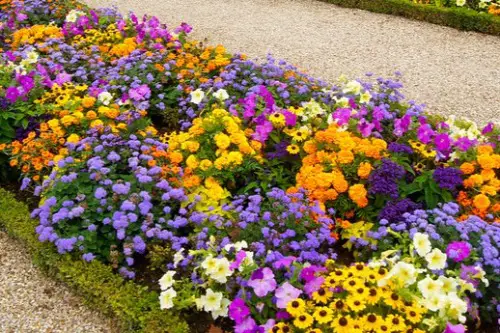
Repeating the same plant or feature across the yard creates rhythm and cohesion, much like a designer handbag uses matching hardware or stitching. It’s a subtle trick that makes a yard feel more curated. Whether it’s five lavender bushes along a path or matching lanterns on the fence, repetition feels organized—and organization feels rich. It’s a landscaping version of minimalism: less chaos, more calm.
People often mix too many plant types or colors, which can look cluttered and random. Repeating the same elements says, “This was planned and designed.” It’s also easier to maintain because you’re not juggling wildly different plant needs. The end result? Effortless-looking elegance.
11. Layered Plant Heights in Beds
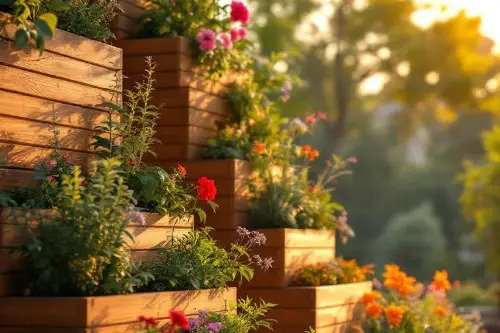
Beds that have tall plants in the back, mid-size ones in the middle, and low groundcovers in front look straight out of a garden magazine. This layering gives the landscape depth and dimension, making the space look bigger and more dynamic. It’s a classic design principle used in estate gardens and botanical parks. And it’s easier than it sounds if you choose plants with different growth habits.
The key is knowing the mature size of each plant and arranging accordingly. You can even fake it with planters if your ground soil isn’t cooperative. The layered look gives the impression of time, experience, and thoughtful design. It whispers luxury, not flash.
12. Hidden Utility Features
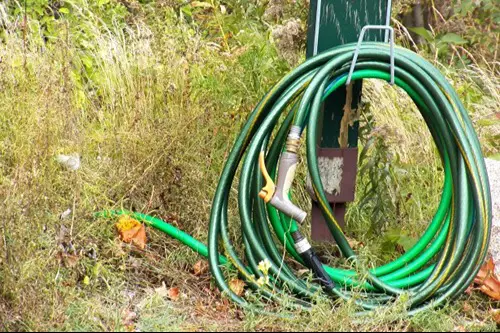
When trash bins, air conditioning units, or hoses are concealed with fencing, screens, or shrubs, the whole yard looks cleaner and more expensive. It’s not that these things don’t exist—it’s that they’re tucked away, as they would be in high-end developments. Hiding utility items shows attention to detail, a big marker of affluence. It creates the illusion that everything has its place.
Simple lattice panels, tall grasses, or even custom-built enclosures can do the trick. This move improves the overall visual flow of the yard and removes harsh interruptions. Most people don’t notice when these things are hidden—but they definitely notice when they’re not. And once they’re out of sight, the rest of your yard gets to shine.
13. Curved Garden Borders Instead of Straight Lines
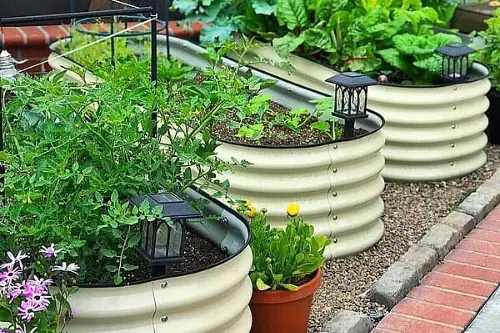
Curved flower beds or borders instantly soften a yard and feel more custom than simple straight edges. The gentle arcs mimic the flow of high-end gardens, where design is often guided by natural shapes. Even if your plants are modest, the curves give them a stage that feels artfully crafted. This kind of layout signals that time and thought went into the design.
Creating curves doesn’t require expensive materials—just a shovel and a willingness to reimagine the shape of your lawn. Once mulched or edged, the flow looks intentional and upscale. The eye naturally follows the movement, making the space seem larger and more inviting. It’s a subtle upgrade that turns a plain lawn into something that feels landscaped by a pro.
14. Seasonal Flower Swaps
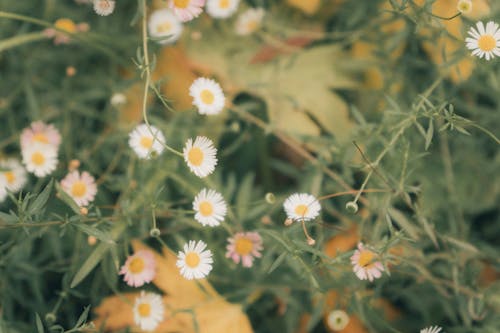
Rotating blooms throughout the year makes a yard look constantly refreshed, like it’s cared for by a dedicated gardener. High-end properties often do this to maintain color and interest every season. Even just swapping out front planters in spring, summer, and fall can create the effect. It’s a visual cue that someone is actively investing in the space.
The trick is choosing plants that thrive in their season and replacing them before they fade. This way, the yard never has a “down time” where everything looks tired. Seasonal updates also let you experiment with colors and textures without committing long-term. The constant renewal keeps the property looking vibrant—and more valuable.
15. Decorative Garden Structures
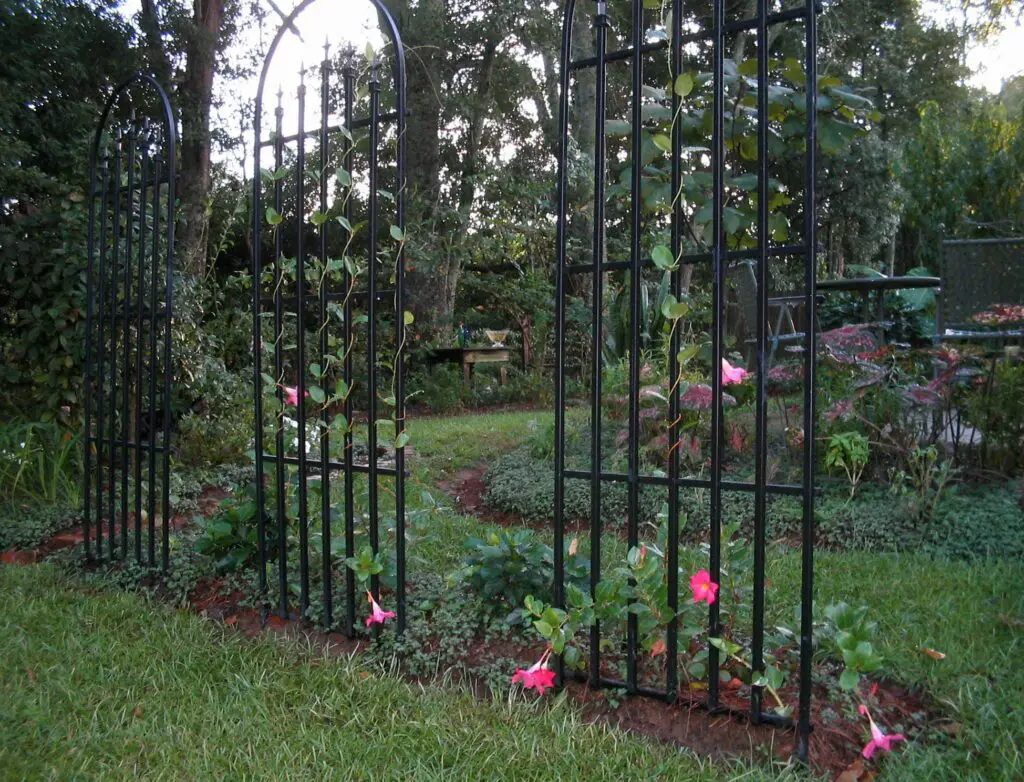
Adding a trellis, pergola, or arbor instantly injects architectural interest into the yard. These elements frame views, create shade, or provide a home for climbing plants like roses or wisteria. Even a small archway over a path can create a sense of arrival that feels grand. They’re often seen in luxury landscapes because they layer function with beauty.
You don’t have to go for elaborate, expensive builds—simple wood or metal designs can do the trick. Once paired with greenery, they blend seamlessly into the environment. The structure becomes part of the story your yard tells, suggesting heritage or careful curation. It’s a one-time investment that pays off for years in perceived value.
16. Water Features with Subtle Sound
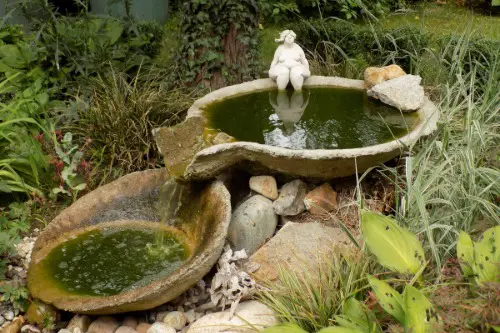
The gentle sound of moving water is one of those sensory touches that makes a property feel serene and expensive. Whether it’s a small fountain, a bubbling urn, or a pond with a hidden pump, water features create ambiance. They’re common in luxury hotels and spas for a reason—they calm the mind and elevate the space. Even tiny yards can host a compact version.
The key is keeping the design clean and the water clear, so it doesn’t drift into “neglected birdbath” territory. Solar-powered pumps make these low-maintenance and cost-effective. Once installed, the sound alone can change the way the entire yard feels. It’s like installing an instant atmosphere upgrade.
17. Mixed Textures in Hardscaping
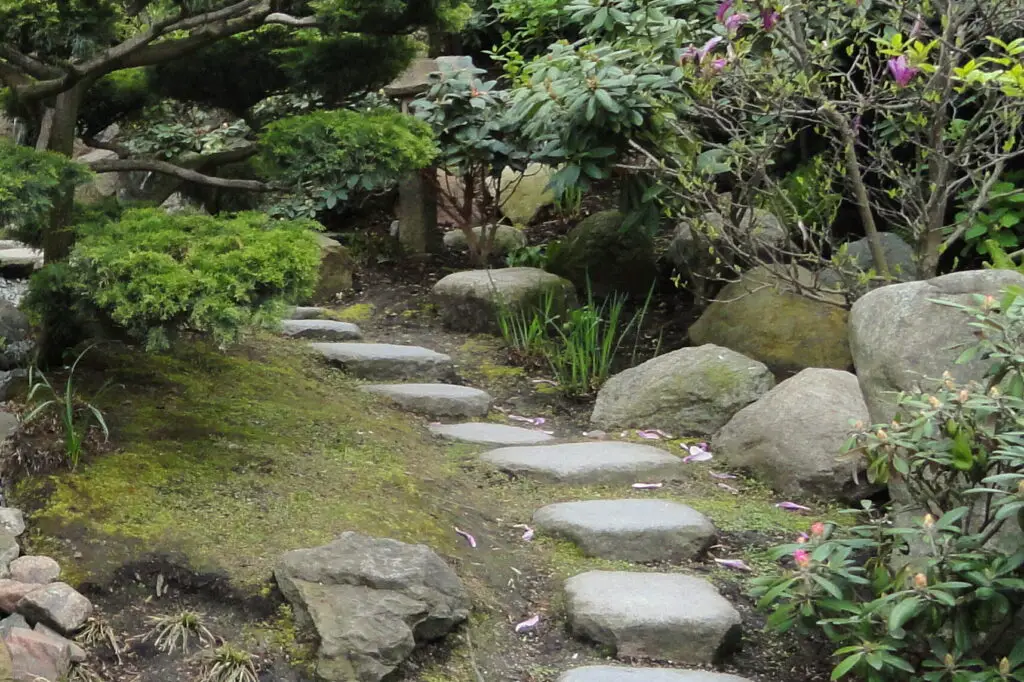
Pairing materials like stone, brick, and wood creates depth and richness in patios, paths, or retaining walls. This layering of textures is a hallmark of custom outdoor spaces. Even if the materials are affordable, the variety suggests a designer’s hand was involved. It breaks up visual monotony and makes the space feel elevated.
Think stone pavers edged with brick, or gravel paths with timber borders. These combinations add personality and visual weight without overwhelming the space. Done right, they make visitors feel like they’re walking through a curated landscape. And curated always reads as costly, even when it’s not.
18. Framed Garden Views from Indoors

Designing your landscaping so that windows frame a picturesque view adds a surprising amount of “wow” factor. Luxury properties often position plants, sculptures, or seating areas to be seen from inside the home. Even small changes—like moving a planter into the line of sight—can create the effect. It makes the outdoors feel like part of the interior design.
This move encourages year-round enjoyment of the garden, not just in warm months. It’s especially effective in homes with large windows or glass doors. Every time you glance outside, you’re greeted with a composition that feels deliberate and refined. It’s a trick interior designers and landscapers both love.
19. Integrated Outdoor Seating

Built-in benches, stone walls that double as seats, or even a tucked-away corner with a couple of chairs give the yard purpose. It’s not just plants—it’s a space meant for living. This human element is something you see in high-end properties, where the landscaping is both decorative and functional. Guests see a place to linger, and that makes it more memorable.
You can create this effect with simple DIY builds or repurposed materials. Adding cushions or pillows ups the comfort level while signaling attention to detail. The seating area becomes a destination, not just a backdrop. And when a yard feels livable, it feels luxurious.
20. Layered Lighting Zones

Instead of one floodlight blasting the whole yard, multiple smaller lights create depth and sophistication. Think path lights, tree uplights, and subtle patio glows working together. The layered approach mimics the look of resort grounds after dark. It’s inviting, safe, and subtly showy all at once.
Solar and low-voltage systems make this achievable without a pro electrician. The variation in brightness and placement draws the eye through the landscape. It also allows you to highlight your yard’s best features while leaving less appealing spots in shadow. The end result feels tailored—and tailored usually reads as expensive.
This post 20 Landscaping Moves That Accidentally Create the Illusion of Wealth was first published on Greenhouse Black.
